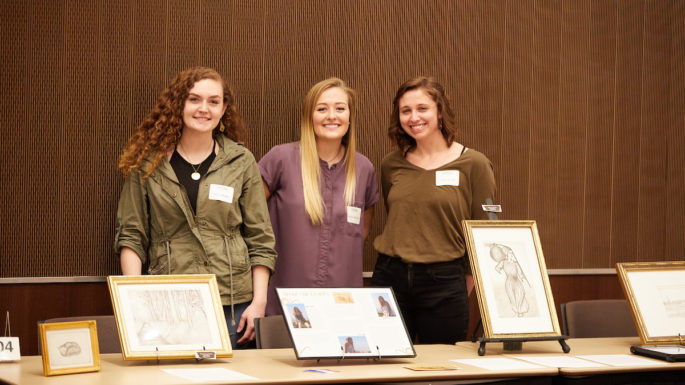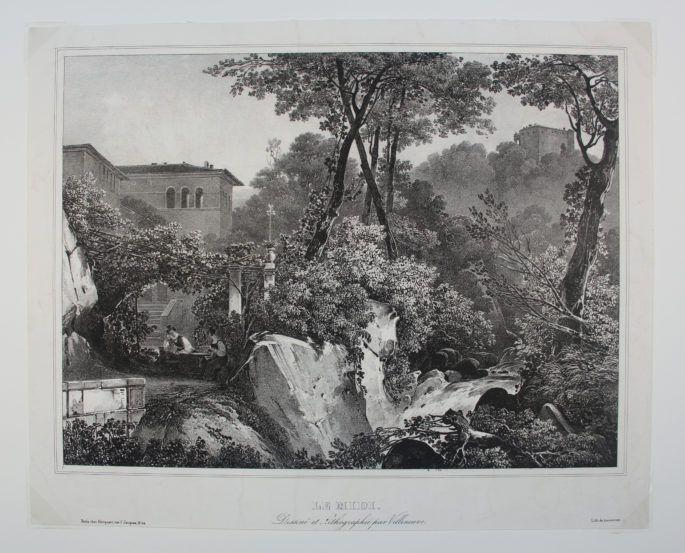Posted 9:48 a.m. Thursday, May 16, 2019

Study in France gives printmaking students glimpse of how art was inspired 200 years ago.
Study in France gives printmaking students glimpse of how art was inspired 200 years ago
About 200 hundred years ago artists flocked to Barbizon, a remote village in France. At a school there, they created prints that sparked the beginning of French impressionism. Perhaps what made the Barbizon region such a rich hub of artistic inspiration was the nearby natural beauty. A vast forest sits on the edge of Barbizon where it is said artists often entered for inspiration.
This forest is one of the strongest memories for three UW-La Crosse printmaking students who traveled to the Barbizon in July 2018 through UW-La Crosse Undergraduate Research & Creativity grants. Art Professor Joel Elgin initially encouraged the students to consider the grants.
The students had to make their way through the forest by bike as it was the only sure method of transportation to and from Barbizon from a nearby city where they were staying. But, on the journey, they got lost amid the oaks, pines and flowering plants. After several hours they finally reached Barbizon, feeling both hot and tired.
Now looking back, they say their misfortune was perhaps a blessing in disguise. It gave them a deeper perspective of the artists, prints and place they were there to study.
“It was good that we spent all that time in the forest seeing what the artists saw a long time ago,” says UWL student Julia Mielke.

During their study abroad experience, Mielke, Rachel Alderton, and Lydia Reilly aimed to gain a deeper understanding of the significance of the structures, locations, and people of France who were important enough to be captured in print 200 years ago, as well as the artists who created them. They also studied French people and architecture today, comparing it to how it was presented in the Barbizon prints.
Just as the past artists were inspired by the Barbizon region, so too were the three students. Upon return, they created 16 prints of the areas they visited. The works, along with research gathered on the locations and artists, were displayed spring semester in UWL’s Center for the Arts third floor gallery.
The students' journey to France was inspired after an anonymous art donation to UWL’s Art Department of several hundred Barbizon prints created in the 1800s. The prints included architecture, people and landscapes from throughout France.
“The prints are so amazing and detailed — you wondered how did they do this?” says Mielke. “I wanted to see what they saw and try to create what they created.”
Reilly says before she left for France she researched some of the locations of the prints online. She was astonished to see many were still there. But seeing them in the photos was nothing like seeing them in person. “I never could have experienced the impact of those places without going to them,” she says.

After visiting the locations in the prints, Reilly worked to recreate them through her own prints. In one print she captures a landscape view of the city of Saint Malo, a French port city that was heavily bombed in World War II. The spot that was once visible in the print is no longer there, so Reilly found another view that captured the whole city from a nearby island. “It was my favorite place we went,” she says.
Alderton says the undergraduate research grants allowed them each to explore their own creative interest related to the prints. And the experience made her want to keep learning more.
“I fell in love with the prints even more after going and seeing the talent they had,” she says.
